Review: H-K Models 1/32 Do-335B-2 “Pfeil”
The Dornier Do-335 was at its birth and has remained ever since the only twin-piston engine fighter/bomber aircraft to utilize the centerline thrust concept. In the Do-335, use of this power concept was revolutionary, though Dr. Claudius Dornier had used it on his G-1 flying boat in 1939 and had first used it in the Wal (Whale) flying boat designs during the 1920s and 1930s. Though only ten Do-335A-0 Pfeil (Arrow) aircraft ever reached operational test status before the end of the Second World War, the aircraft has lived on in the minds of aviation enthusiasts for this design concept, which resulted in one of the most radical-looking airframes ever produced.
The Technische Amt issued a requirement in 1942 for a single seat unarmed intruder capable of carrying a 1,100 lb. bomb load at 495 mph. Arado, Dornier and Junkers submitted responses; the Dornier Projekt 231, employing centerline thrust, was the winning contender.
The first prototype flew on October 26, 1943, and 14 other Versuchs aircraft entered test flight status during the winter of 1943-44, constituting the prototypes of the A-series fighter-bomber. With the worsening of the war situation, development emphasis switched during late 1944 from the A-series fighter-bomber to a more heavily-armed B-series Zerstoerer, with the first two prototypes, the V13 and V14, being completed at Oberpfaffenhofen during the winter of 1944-45.
The Do-335 V13 and V14 had the two 15mm cannon in the nose of the A-series replaced by two MG 151 20mm weapons, supplemented by two 30mm MK 103 cannons in fairings ahead of the wing leading edge, just inboard of the main gear; this was to become the Do-335B-2, which would have been the main early production version of the series. Though six other B-series prototypes were under construction when further development was terminated by capture of the Oberpfaffenhofen facility by the U.S. Army in late March, 1945, the V13 and V14 were the only examples of the B-series to ever fly, demonstrating a top speed of 474 mph. Following the end of the war, the Do-335 V14 was handed over to the French, and extensively tested between August 1945 and the spring of 1947.
Only the pre-production Do-335A-02 survives, now on display at the Udvar-Hazy Center of the National Air and Space Museum in Washington D.C.
The Do-335 has previously been modeled in 1/72 scale by Dragon, Revell, Lindberg and Frog, with the most recent kit being done by Hobby Boss. In 1/48 scale by Monogram and Tamiya, though only Tamiya produced a Do-335B-2. This Do-335B-2 from H-K Models is the first kit in 1/32, and is to be followed by a Do-335A fighter-bomber, Do-336A-12 two seat trainer, and Do-335B-6 night fighter. The kit allows one to make either the Do-335B-1 (V13) with the standard wing or the Do335B-2 (V14) with the extended wing span.
The kit consists of 282 parts. Both engines are provided in full detail, with a unique weight placed in the front engine along with a second weight in the ammo feed to insure nose-sitting. All control surfaces are separate, and the engine covers can be displayed in the open position.
Surface detail is among the most delicate ever done on any model. The kit has some unique production techniques, with the inner leading edge of the wing with the cannons provided in an advanced one-piece molding, as are the short-span and long-span wing tips. The unique bulged clear panels are done as separate parts for the canopy. Decals are provided for the two prototypes.
This is no small model. When complete, it is about 3/4 the size of the B-25.
This kit is complex but not complicated, if one follows the instructions. This is not a choice for the modeler as is the case with other kits. The parts design is very precise, and if assembly is not carried out in the order shown in the instruction, many parts will not fit and the kit cannot be completed - this is something I discovered the hard way with the first test shot, which did not come with instructions. You have been warned. This isn't just their idea among many others, presented as a suggestion.
Because of the precise fit of the parts, the modeler must insure that all the sprue attachment points are fully cut off each part. Test fitting of parts is mandatory. If you do all this, construction is quite simple and the model can be built quickly. I did as much pre-assembly painting as possible with the parts on the sprue trees.
The construction process begins with the fuselage interior, consisting of the nose wheel well and bomb bay, the cockpit, the gas tanks, and the rear engine. The forward engine can be attached at this time also, and it is recommended you do so. All this provides a structurally-sound fuselage when this sub-assembly is fitted inside the fuselage halves.
The wings have a very positive attachment with the large spar. I assembled all the control surfaces except the flaps in the neutral position, with the flaps lowered. Once the basic airframe was complete, I proceeded to paint the model.
As with many models that have open sections, the kit is best assembled to be open, which is what I did so that the engines could be seen since this model is headed for display at Planes of Fame.
The prototypes were painted RLM 81 Braunviolett and RLM 82 Lichtgrun, with RLM 76 Lichtblau lower surfaces. I used Xtracrylix for this. The propellers were painted RLM 70 Schwartzgrun.
I wish that the fuselage insignia and the radio codes had been printed to fit the separate covers for the rear engine. As it was, I had to fit these and cut them appropriately prior to applying them. All the decals went down easily under a coat of Micro-Sol.
I assembled and attached the landing gear and the cowling covers, and attached the canopy in the open position. I used Micro Krystal-Klear glue to attach the cleverly-designed side blisters to the main canopy.
In sum, this is an extremely well-designed kit, and displays what is now possible in injection molding production using slide mold technology. Successful assembly requires that a modeler be much more precise in their work than is the case with other models, but the result is excellent. Luftwaffe fans could have fun coming up with "what if" markings for the model. The kit is appropriate for modelers who have learned to take their time with their work, and who have discovered the value of committing the radical act of actually following the instructions.
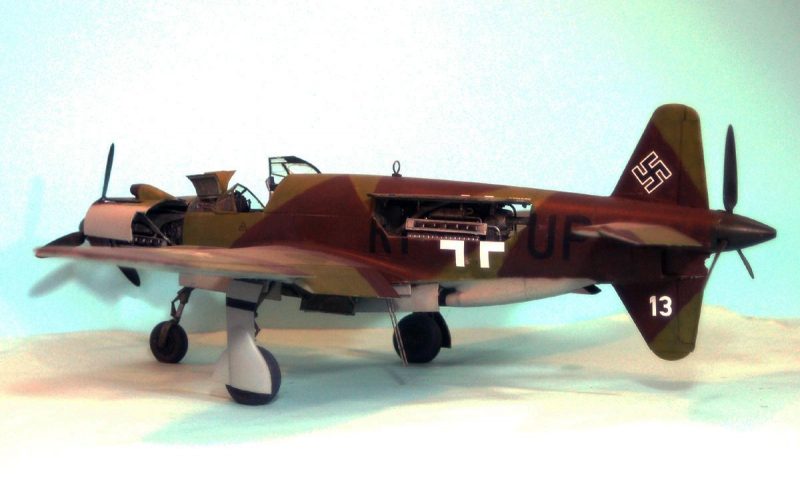
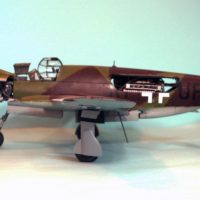
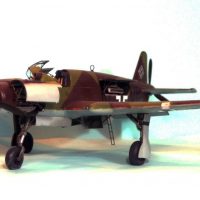

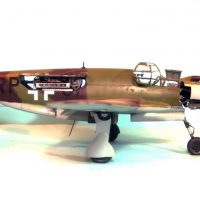
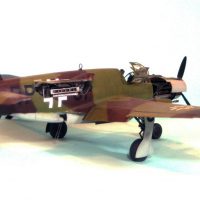
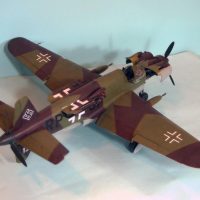
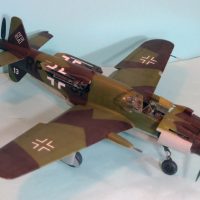
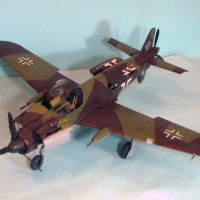

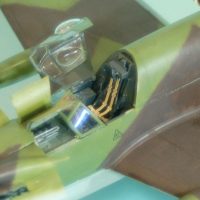
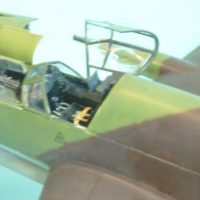
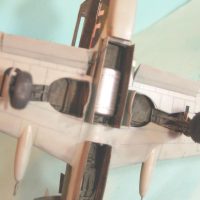
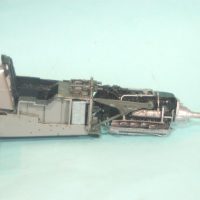
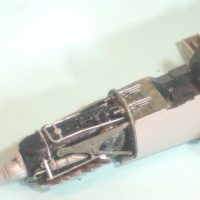
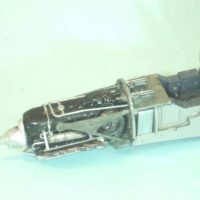
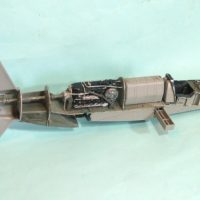

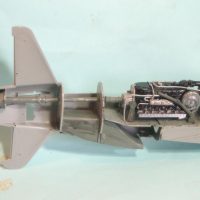
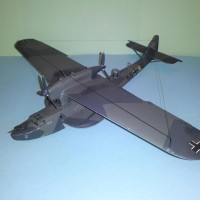
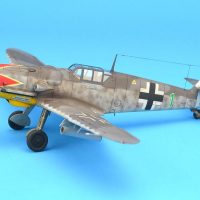

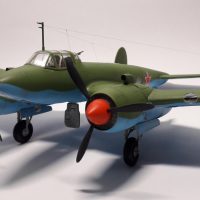
As usual Tom- enjoyed reading and viewing your article.
Kit looks great!
Merry Christmas to you!
Splendid "Ameisenbar" (Anteater) Tom. Excellent detail and finish on this one. Well done!
I'm finishing up reading "Duel of the Eagles" for the third or fourth time. Its good thing the Nazi's had some folks who didn't have a clue on how to use some of the technologies being developed and used. Goring didn't recognize the importance of radar until after the fact during the Battle of Britain. Then you read and see photos of some of the research and development of such a/c as the Do-335... which was years ahead of its time for piston technology and being complicated, needing years of development. Had the Germans found away to manufacture these things like Ford did with B-24s in Willow Run and had they put them into the field earlier in the war they would have created a lot of problems for the allies. Instead, the type is a side note to a what if question and a testimony to the incompetence of Hitler and his cronies.
As usual TC, another classic informative build of new HK kit, I'm sure the folks who like German aircraft will want it to be in their collection.
two thumbs up.
Great modelling.
I want one…….nice looking build Tom. How many schemes come with the kit?
Another great build with a informative text to go with it .
Thank you Tom.
Informative narrative and a nice build.
Good write up, very informative, sounds like a very impressive model kit and eventual model. Very good build as well, good effort!